
Gerolamo Cardano was an Italian polymath whose interests and proficiencies ranged through those of mathematician, physician, biologist, physicist, chemist, astrologer, astronomer, philosopher, writer, and gambler. He became one of the most influential mathematicians of the Renaissance and one of the key figures in the foundation of probability; he introduced the binomial coefficients and the binomial theorem in the Western world. He wrote more than 200 works on science.

The Natural History is a Latin work by Pliny the Elder. The largest single work to have survived from the Roman Empire to the modern day, the Natural History compiles information gleaned from other ancient authors. Despite the work's title, its subject area is not limited to what is today understood by natural history; Pliny himself defines his scope as "the natural world, or life". It is encyclopedic in scope, but its structure is not like that of a modern encyclopedia. It is the only work by Pliny to have survived, and the last that he published. He published the first 10 books in AD 77, but had not made a final revision of the remainder at the time of his death during the AD 79 eruption of Vesuvius. The rest was published posthumously by Pliny's nephew, Pliny the Younger.

Gabriel Andral was a distinguished French pathologist and a professor at the University of Paris.
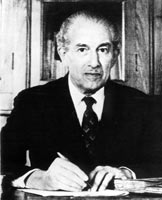
Jean Filliozat was a French writer. He studied medicine and was a physician between 1930 and 1947. He learned Sanskrit, Pali, Tibetan and Tamil. He wrote some important works on the history of Indian medicine. He taught at Collège de France from 1952 to 1978.
Nguyễn Văn Nghị was a Vietnamese-French physician who was prominent among those credited with bringing Chinese medicine to the West
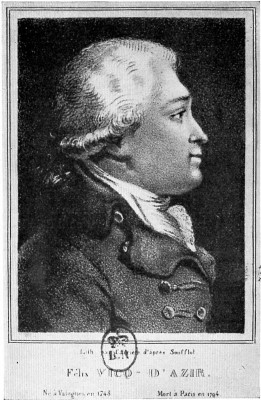
Félix Vicq d'Azyr was a French physician and anatomist, the originator of comparative anatomy and discoverer of the theory of homology in biology.

Asclepiades, sometimes called Asclepiades of Bithynia or Asclepiades of Prusa, was a Greek physician born at Prusias-on-Sea in Bithynia in Anatolia and who flourished at Rome, where he practised and taught Greek medicine. He attempted to build a new theory of disease, based on the flow of atoms through pores in the body. His treatments sought to restore harmony through the use of diet, exercise, and bathing.

Marcel-Paul "Marco" Schützenberger was a French mathematician and Doctor of Medicine. He worked in the fields of formal language, combinatorics, and information theory. In addition to his formal results in mathematics, he was "deeply involved in [a] struggle against the votaries of [neo-]Darwinism", a stance which has resulted in some mixed reactions from his peers and from critics of his stance on evolution. Several notable theorems and objects in mathematics as well as computer science bear his name. Paul Schützenberger was his great-grandfather.

Pierre Demours was a French physician, zoologist and translator.
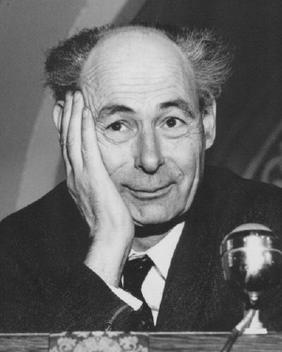
Paul Tournier was a Swiss physician and author who had acquired a worldwide audience for his work in pastoral counseling. His ideas had a significant impact on the spiritual and psychosocial aspects of routine patient care, and he has been called the twentieth century's most famous Christian physician.
Thessalus of Tralles was a famous Roman physician and early adherent to the Methodic school of medicine. He lived in Rome, where he was the court physician of Emperor Nero. It was here that he died and was buried, and his tomb was to be seen on the Via Appia.
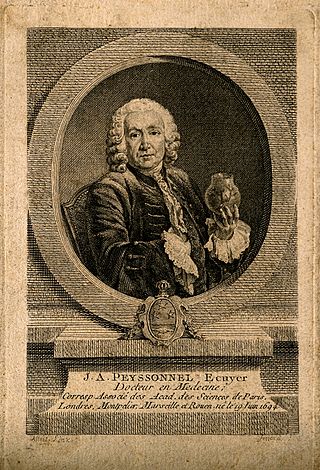
Jean-André Peyssonnel was a French physician and naturalist, known for his work in marine natural history.
Andron was a physician of ancient Greece who is supposed by André Tiraqueau, and after him by Johann Albert Fabricius, to be the same person as Andreas of Carystus. Other scholars have concluded this to be a mistake which has arisen from earlier writers reading "Andron" in the works of Pliny the Elder instead of "Andreas".
The Avatici were a Gallic tribe dwelling near the Étang de Berre, between the mouth of the Rhône river and Massilia, during the Roman period.
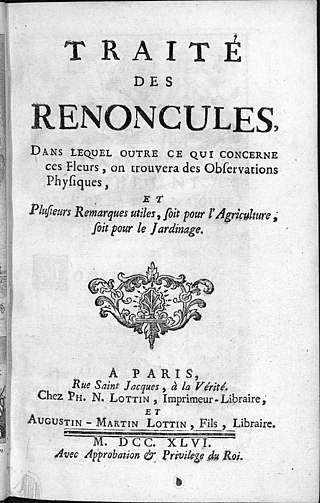
Father Jean-Paul de Rome d'Ardène in domaine d'Ardène in Saint-Michel was an 18th-century French botanist.
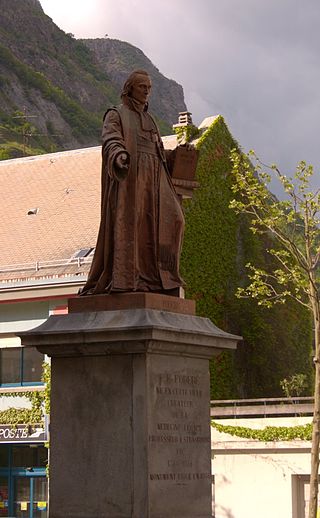
François-Emmanuel Fodéré was a French forensic physician.
Abd El Razzaq Ibn Mouhammed Ibn Hamadouch Al-Jazaïri, also known as Abd El Razzaq Al-Jazaïri was a 17-18th-century Algerian important Muslim physician and scientist. His most important work was Kachef Eroumouz fi eharh-El-aquakir ou El-alchbab , which is a treatise on medical subject classified in alphabetical order. This book was very successful in Algeria and Maghreb, and more generally throughout all of the arab world, and influenced islamic medicine.
Jean Tagault or Jean Tagaut was a French physician and anatomist known for his surgical work and for having fought against Michel Servet who defended judicial astrology and divination as sciences. He is often confused with his son Jean Tagaut, a doctor and poet.

Charles Adolphe Ernest Wickersheimer was a French physician, librarian and historian of medicine.
Charmis of Marseilles was a famous Roman physician. A native of Massilia, he came to Rome during the reign of Nero. Pliny counted him as a "completely Greek physician". He achieved great fame and fortune in Rome by introducing the practice of cold bathing, which supplanted the astrological medicine of his fellow townsman Crinas. Crinas had in turn supplanted Thessalus, who followed the principles of the Methodic school of medicine.












